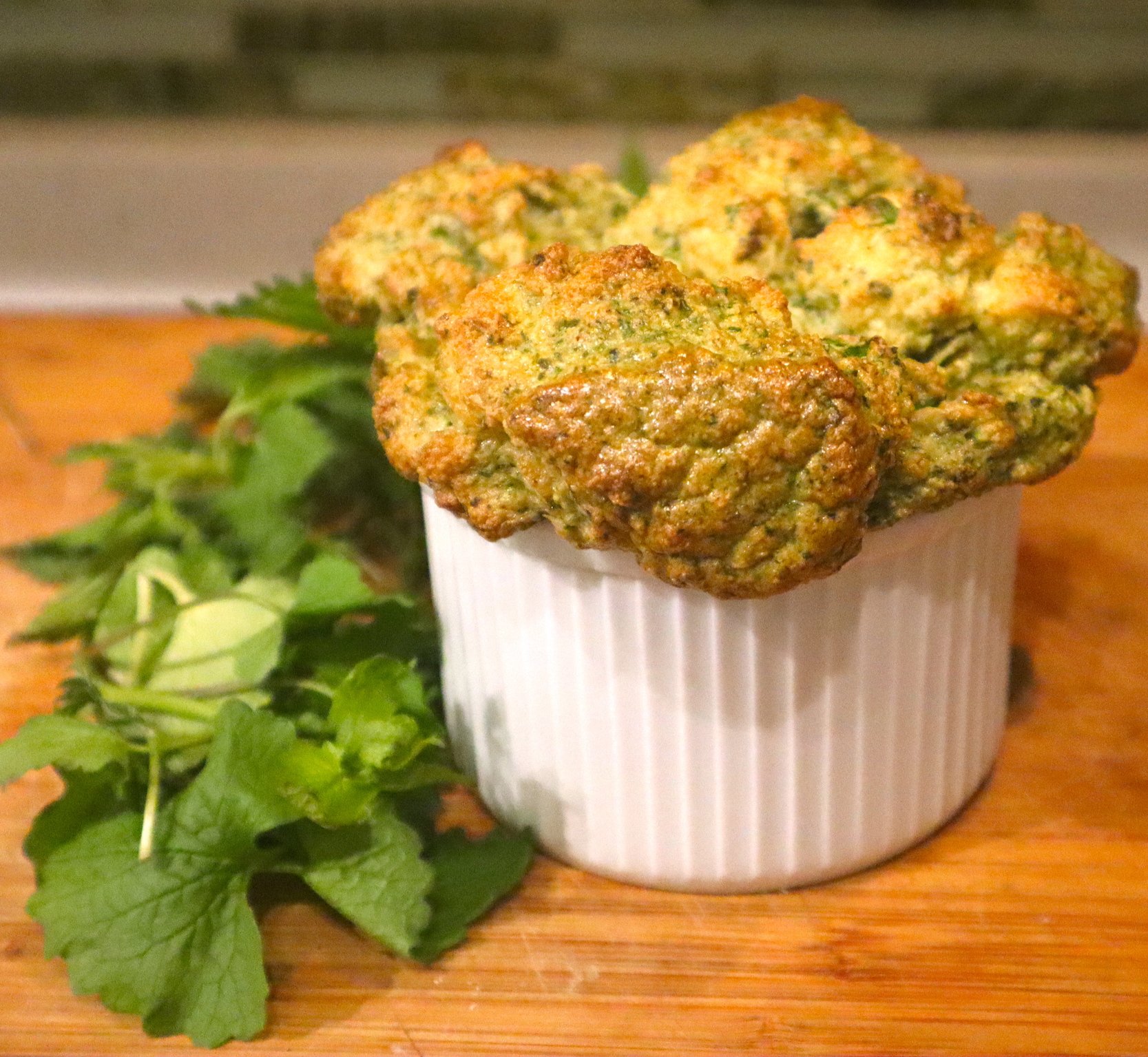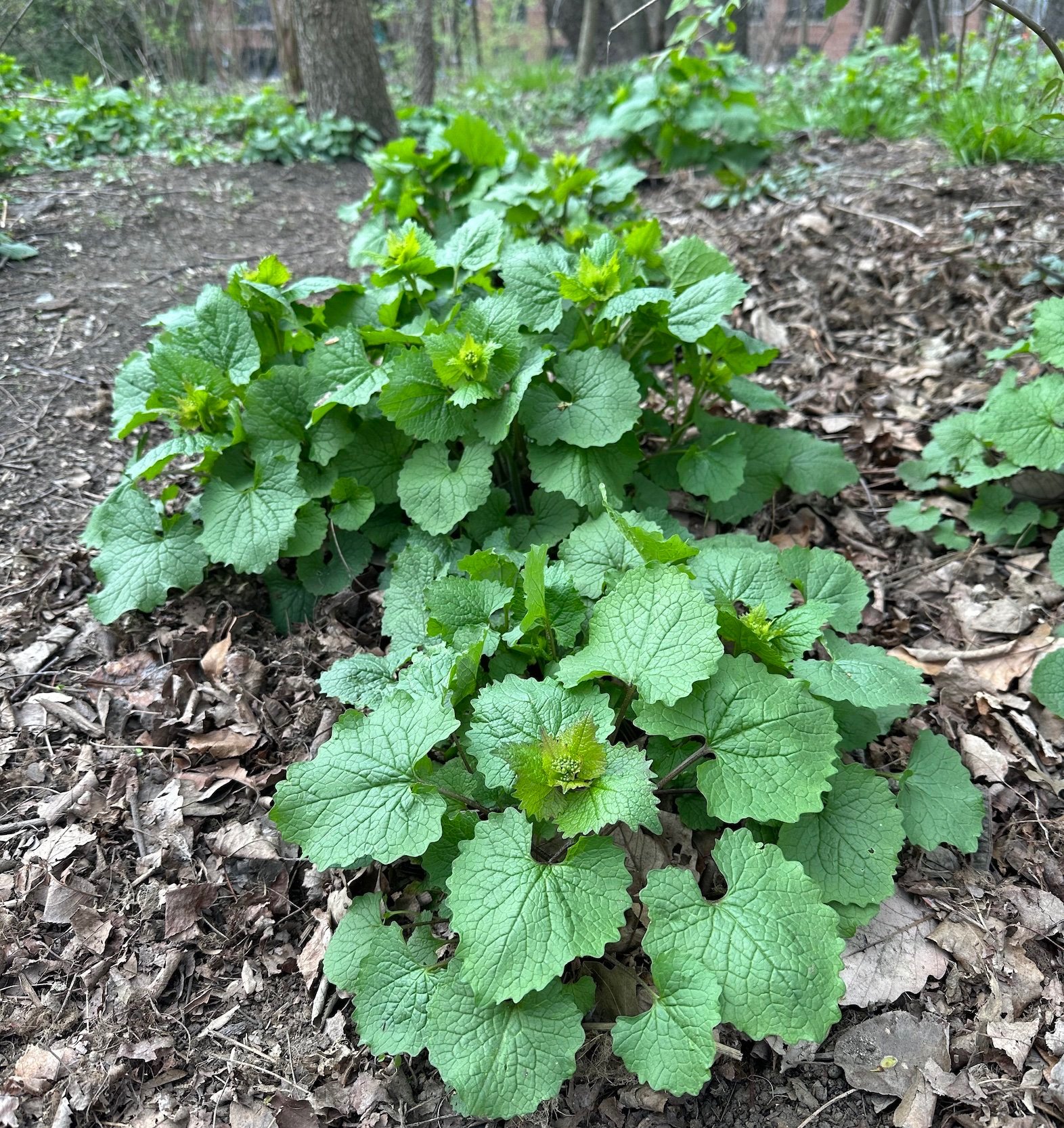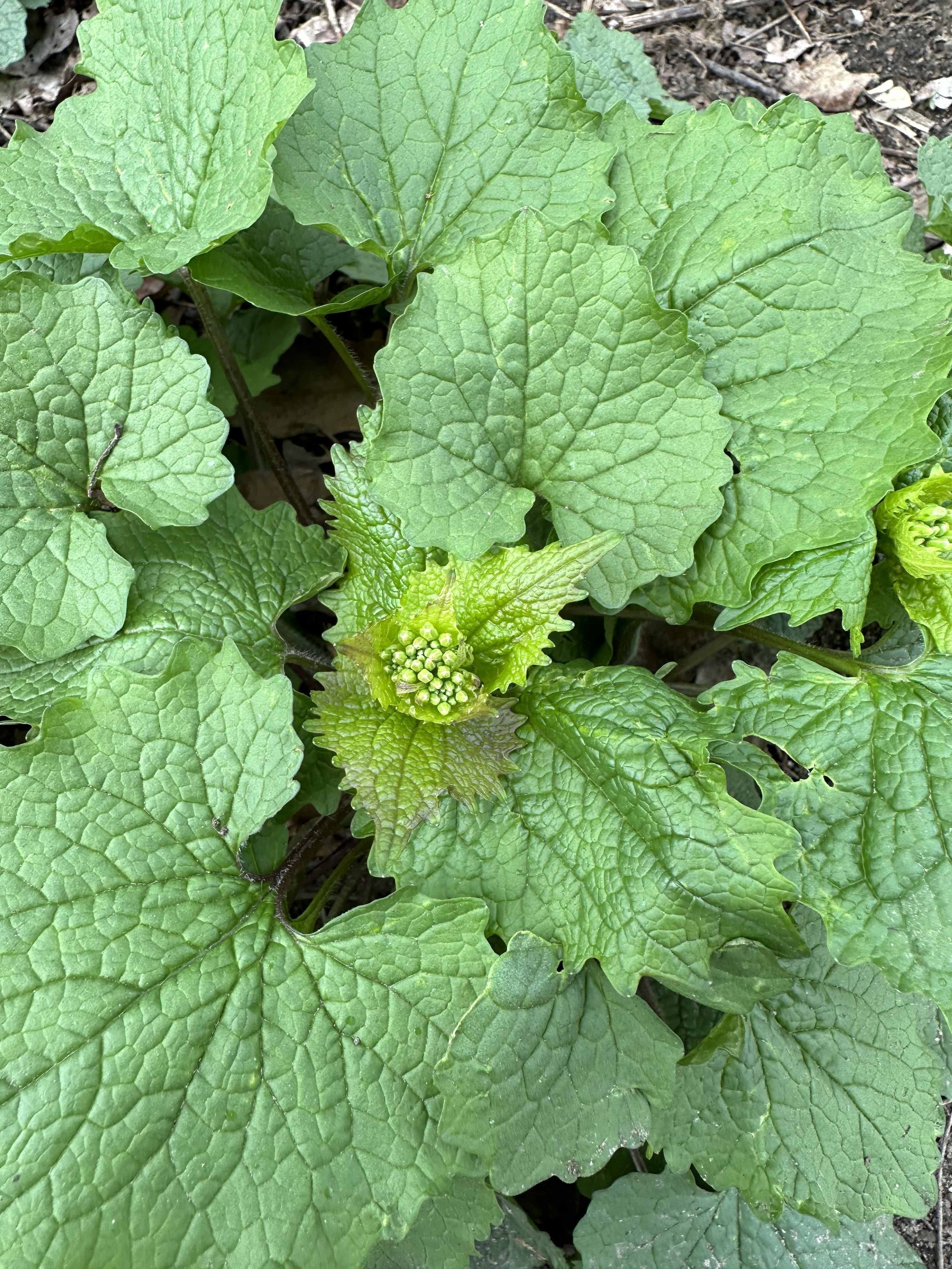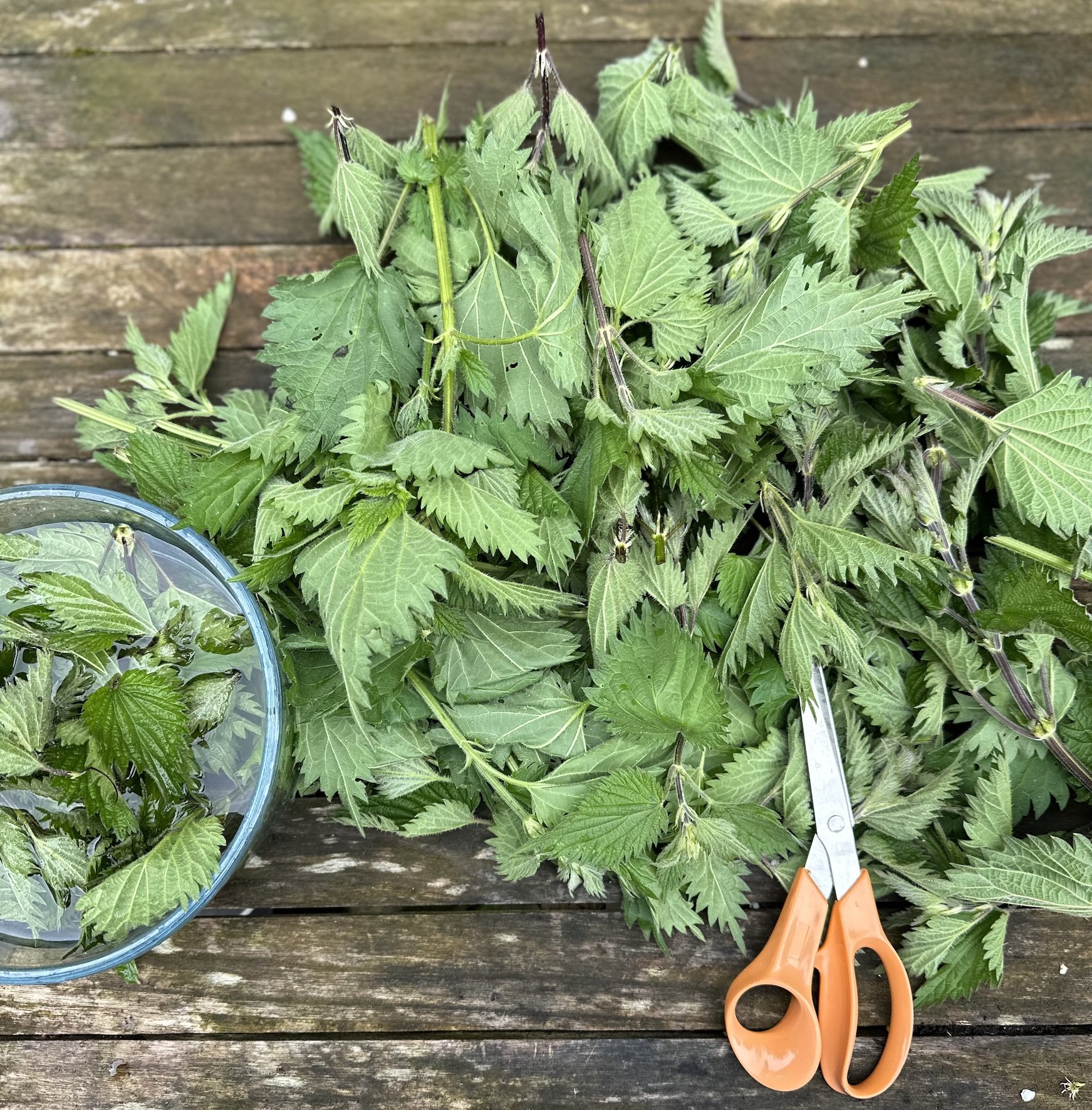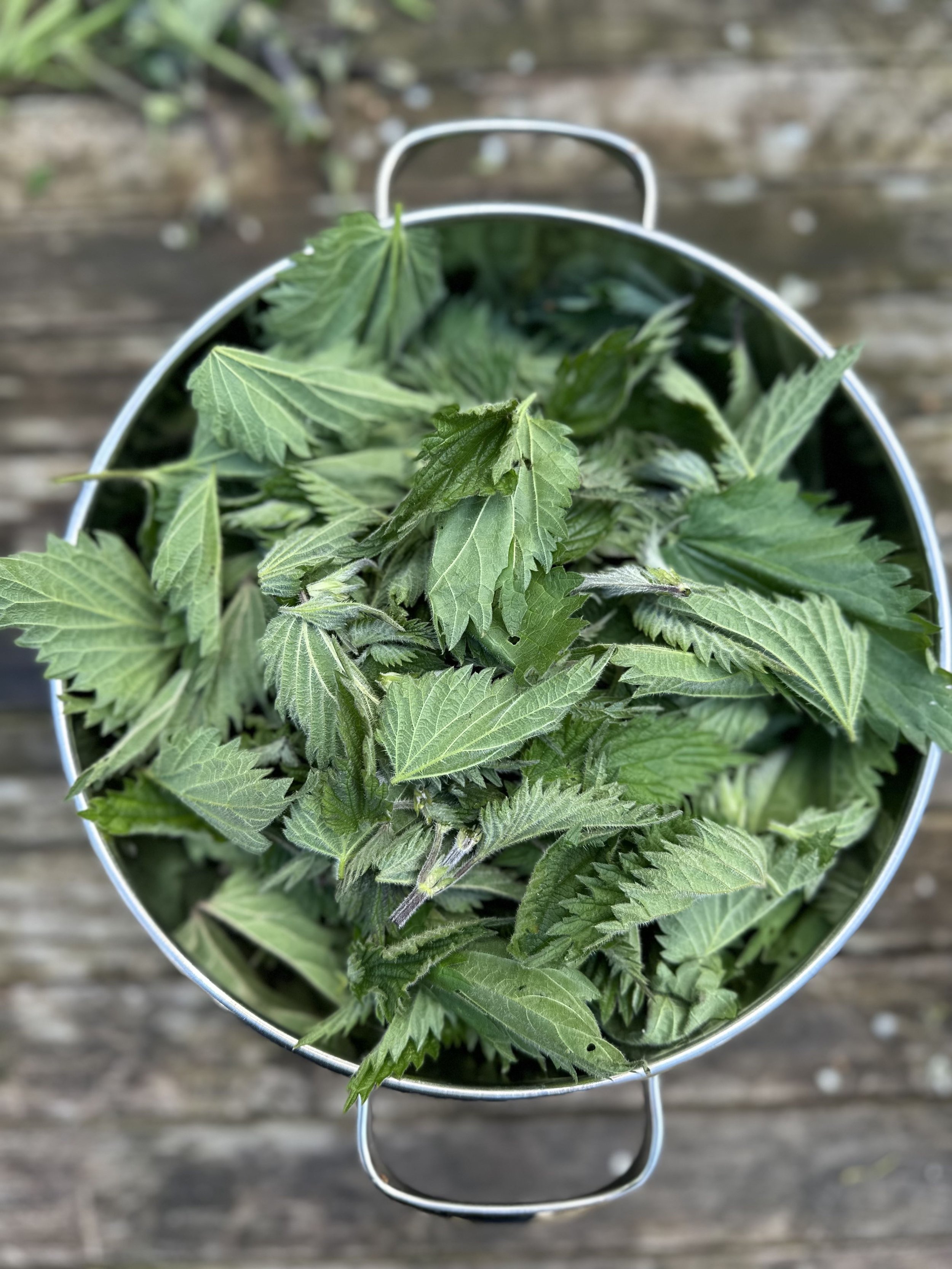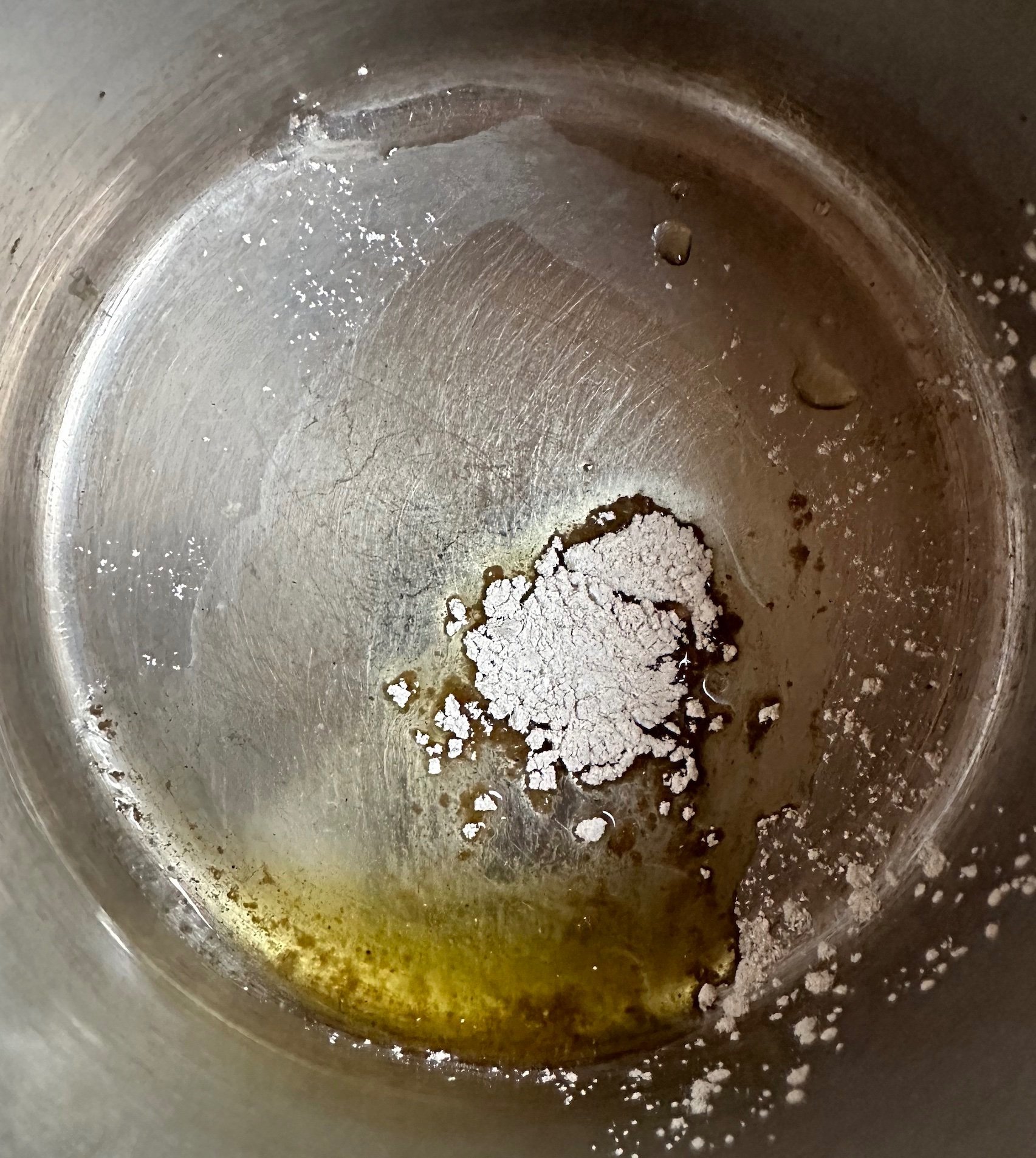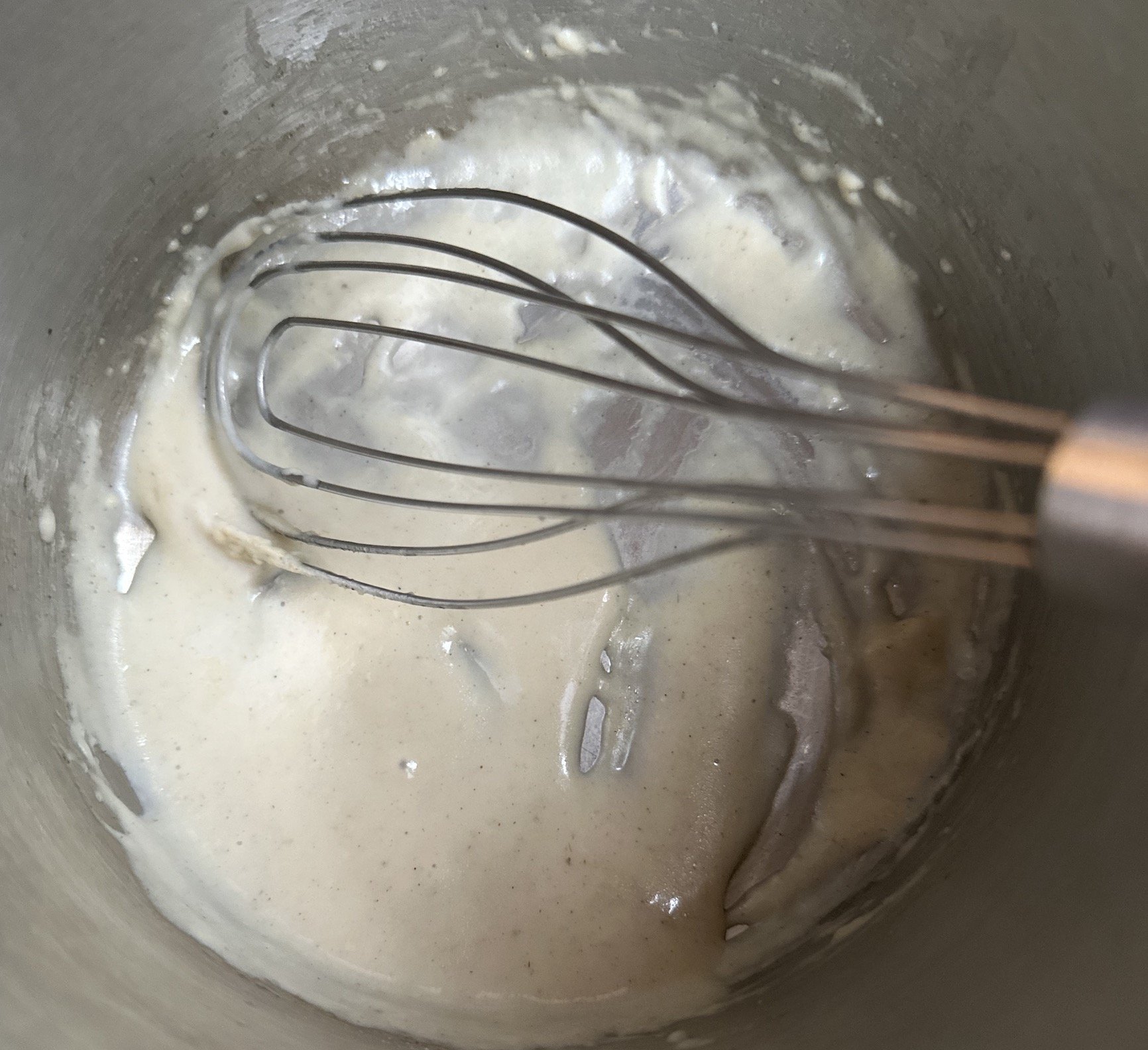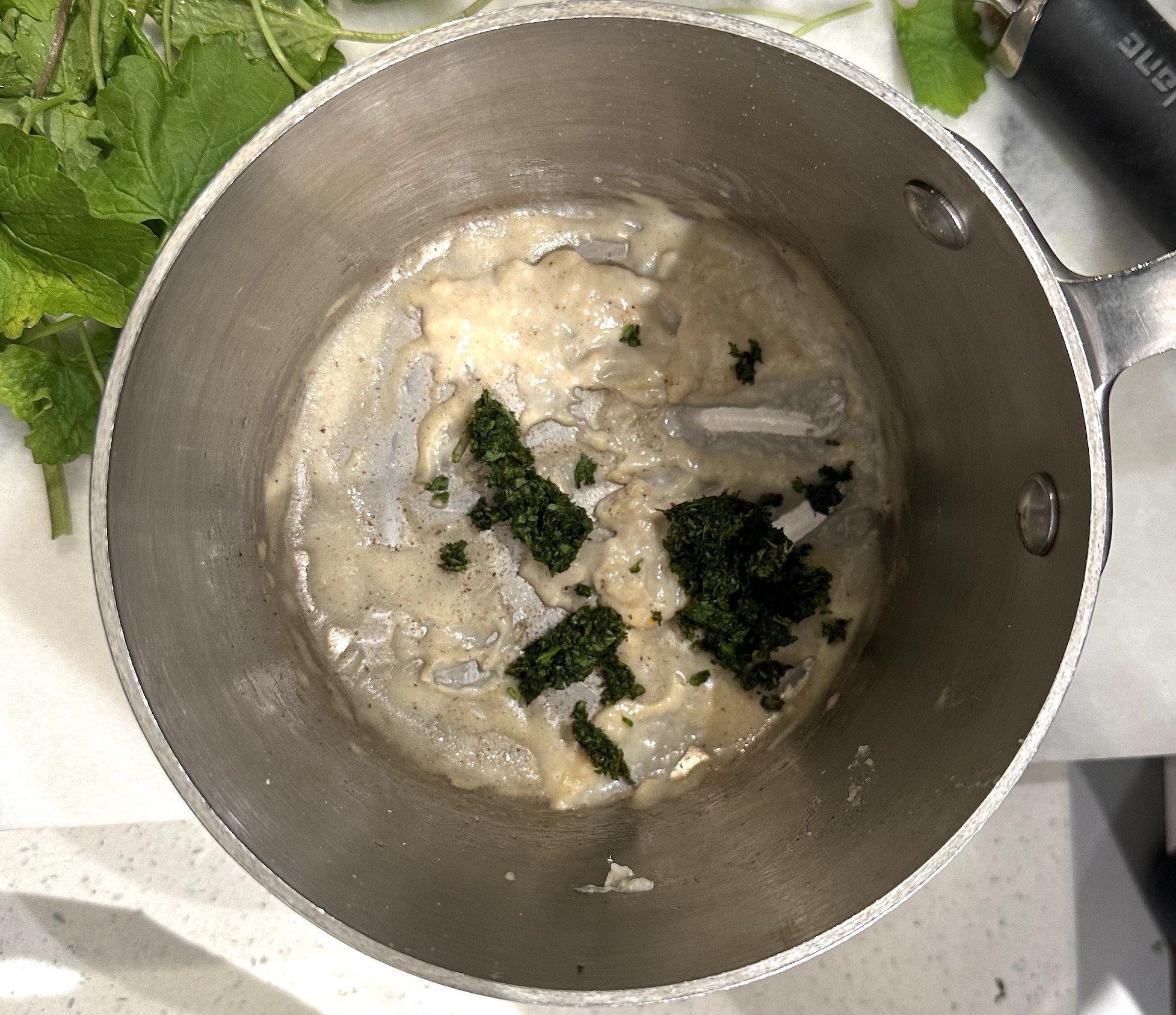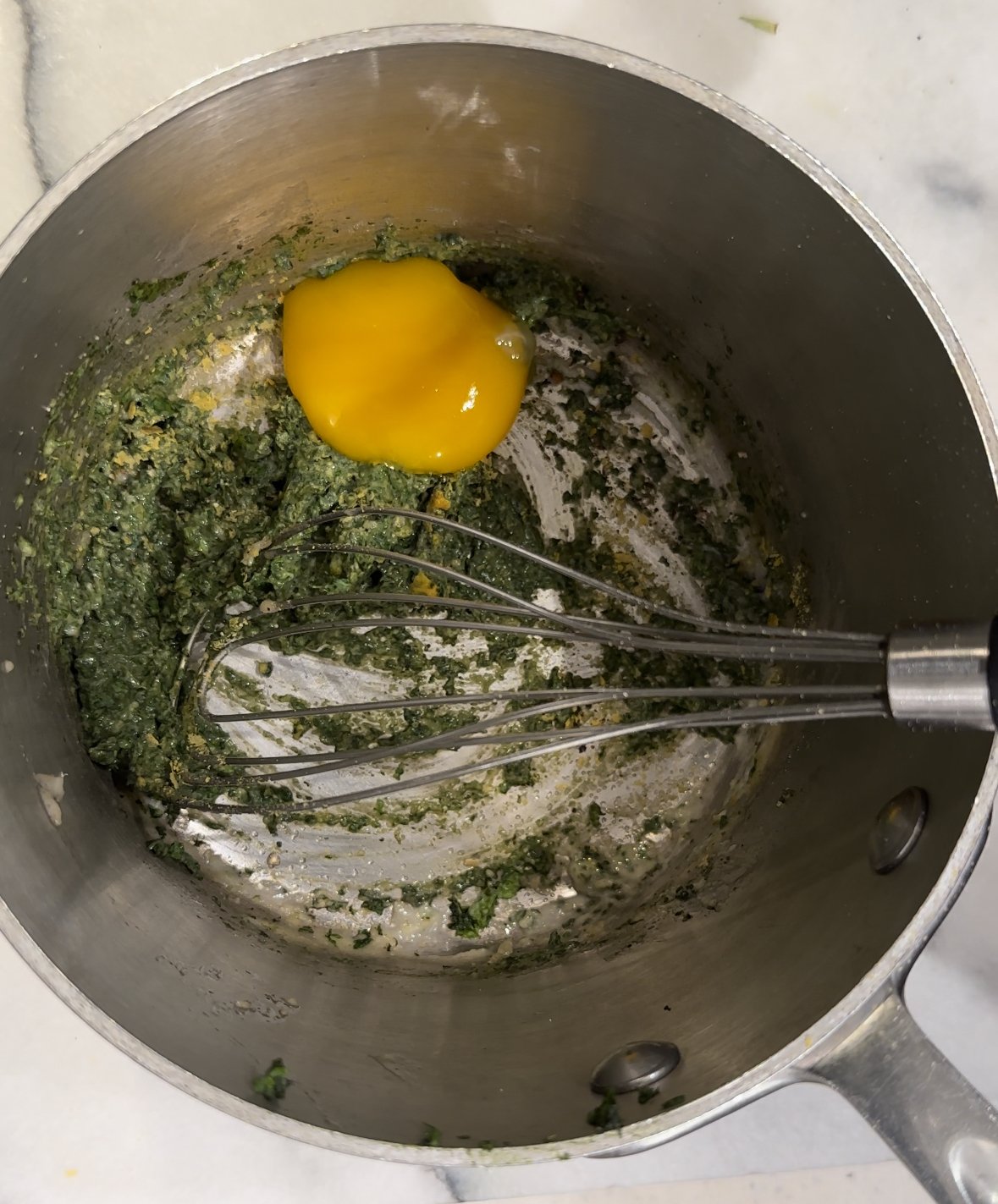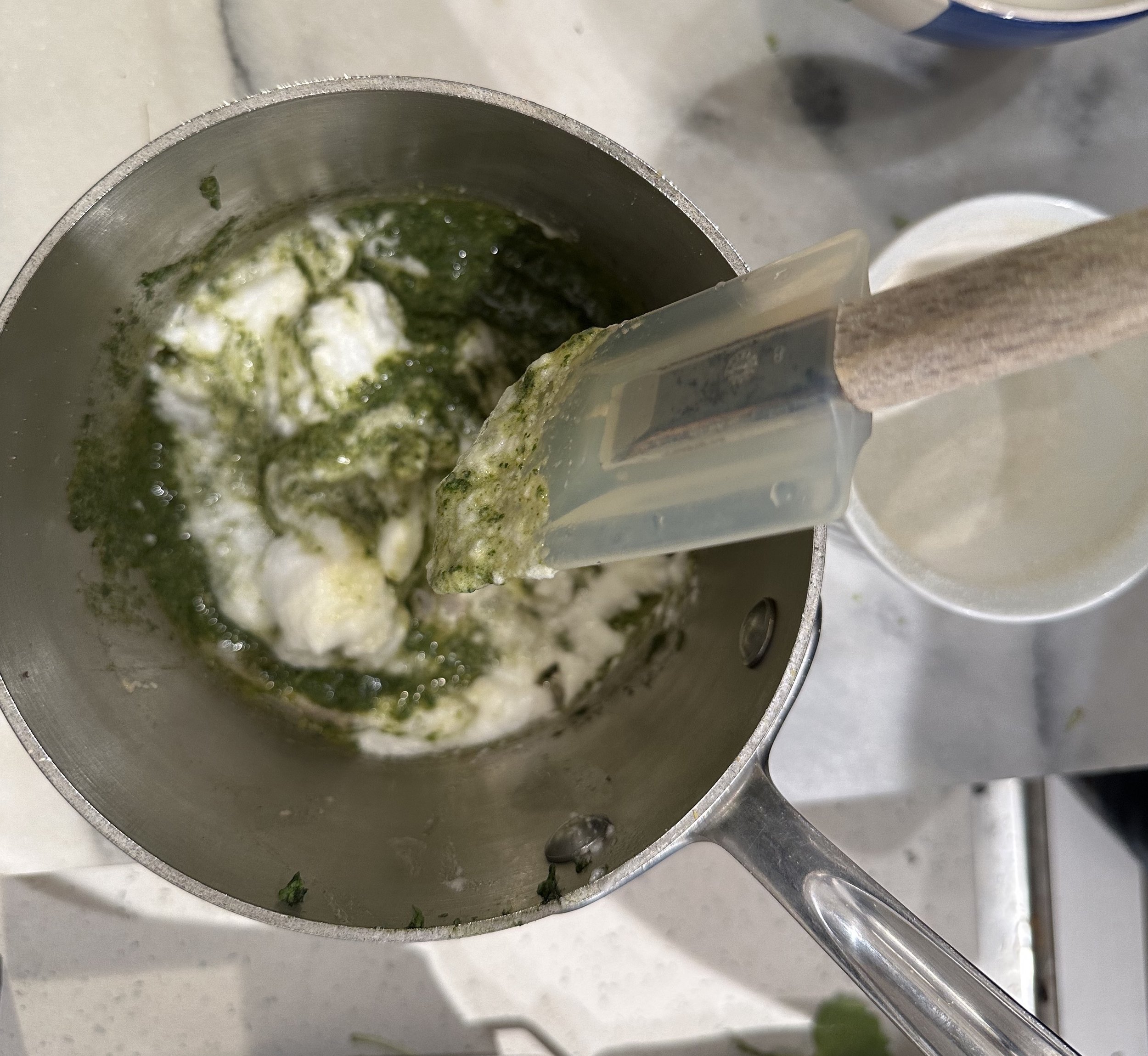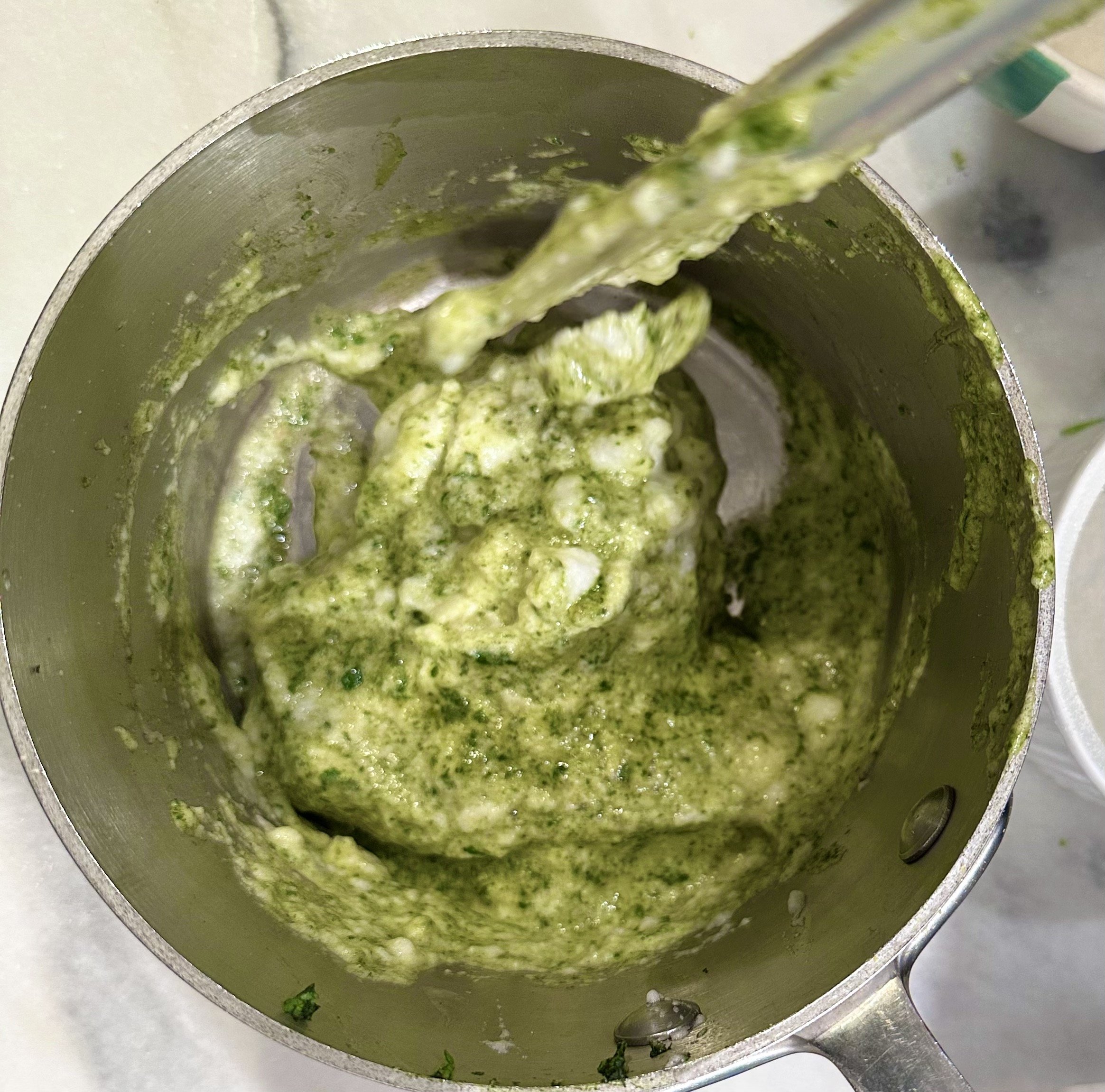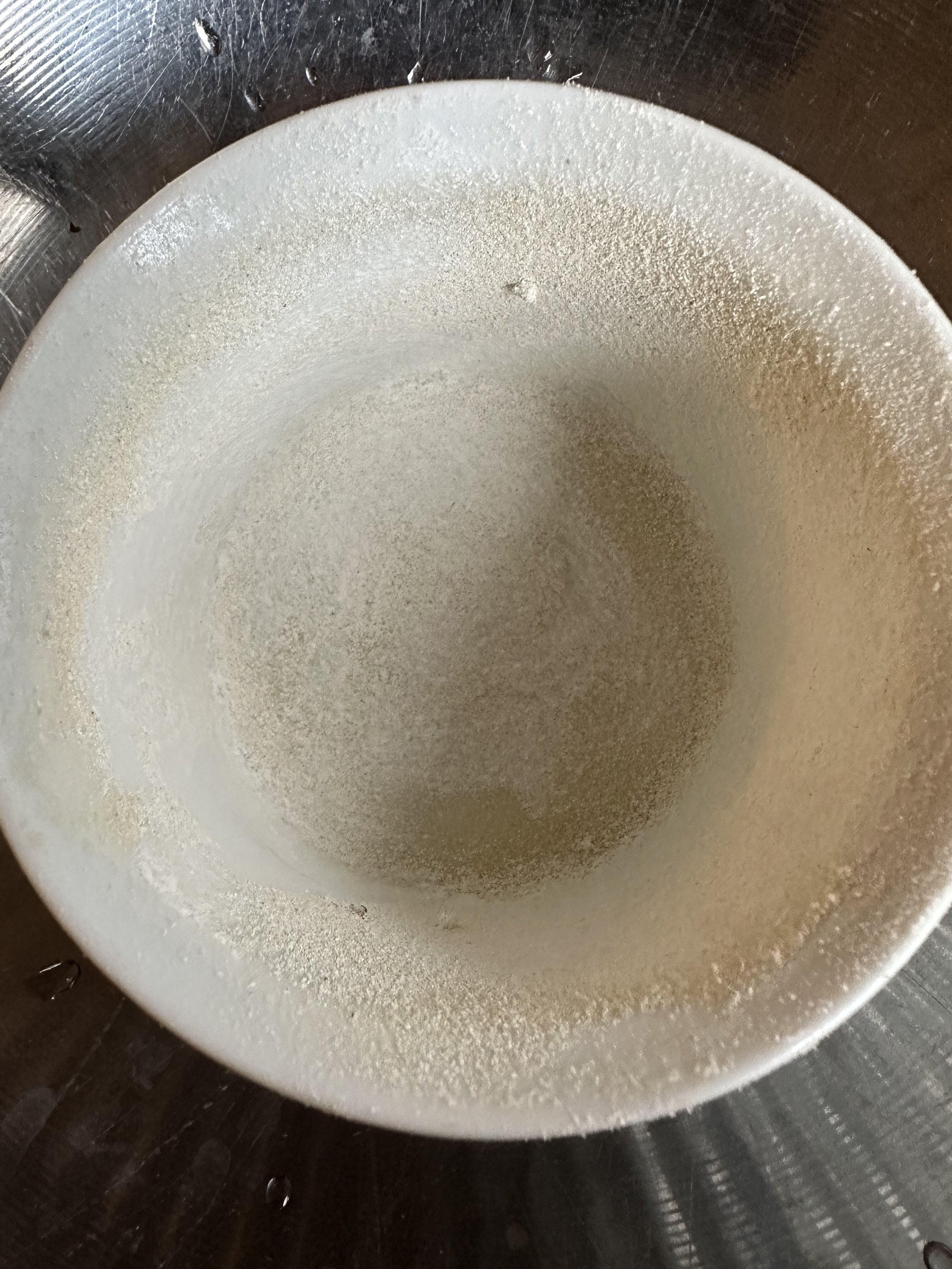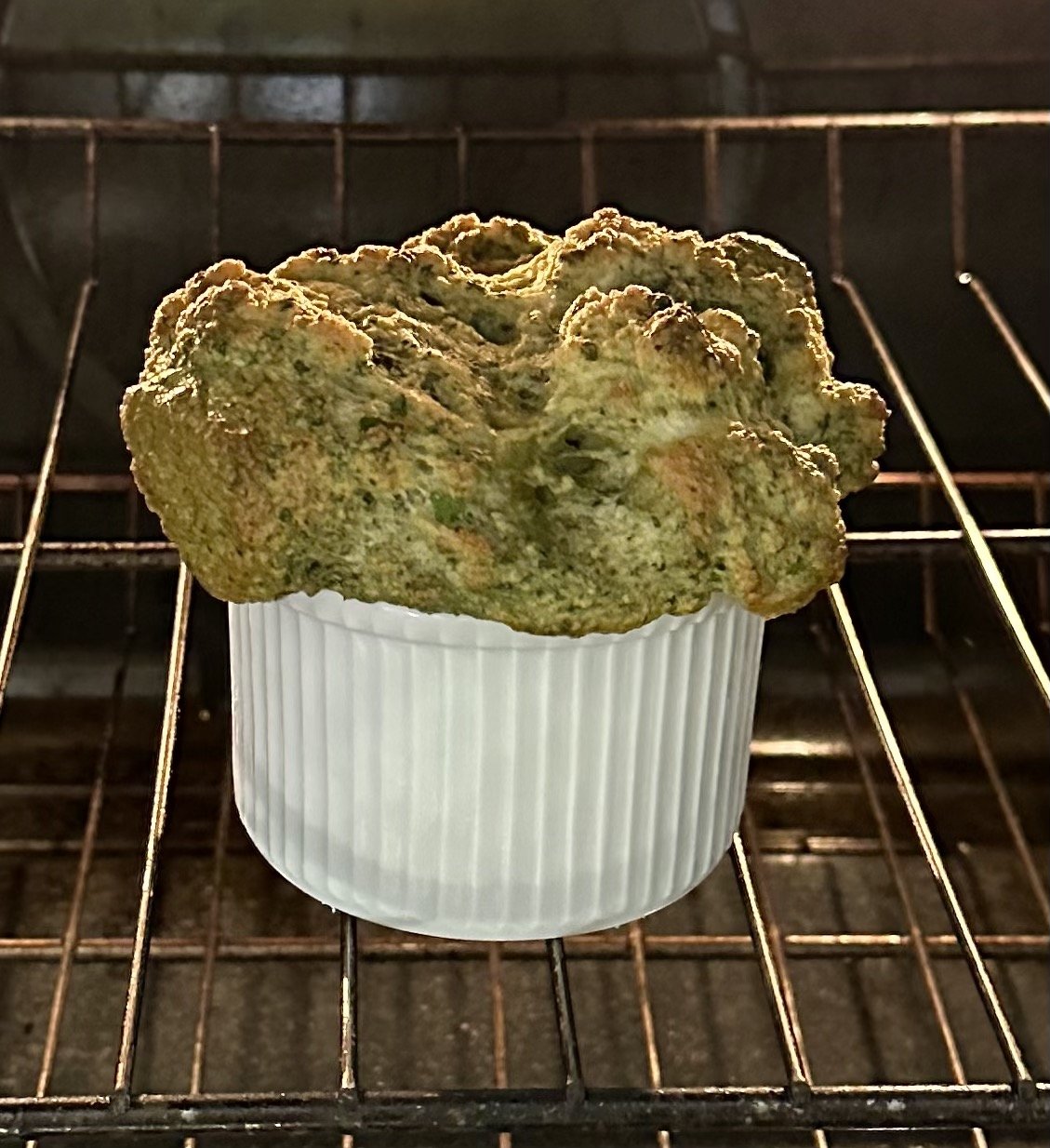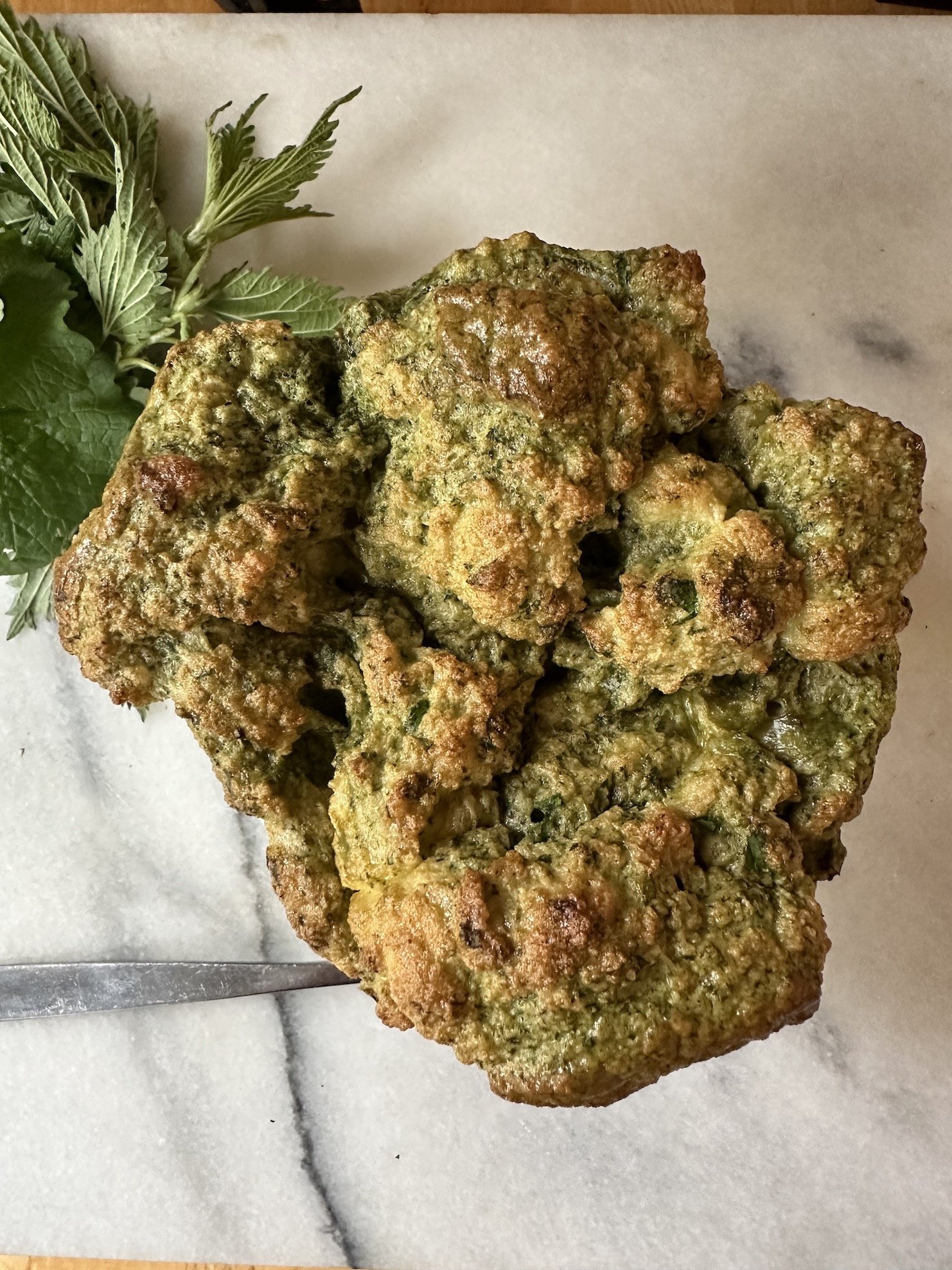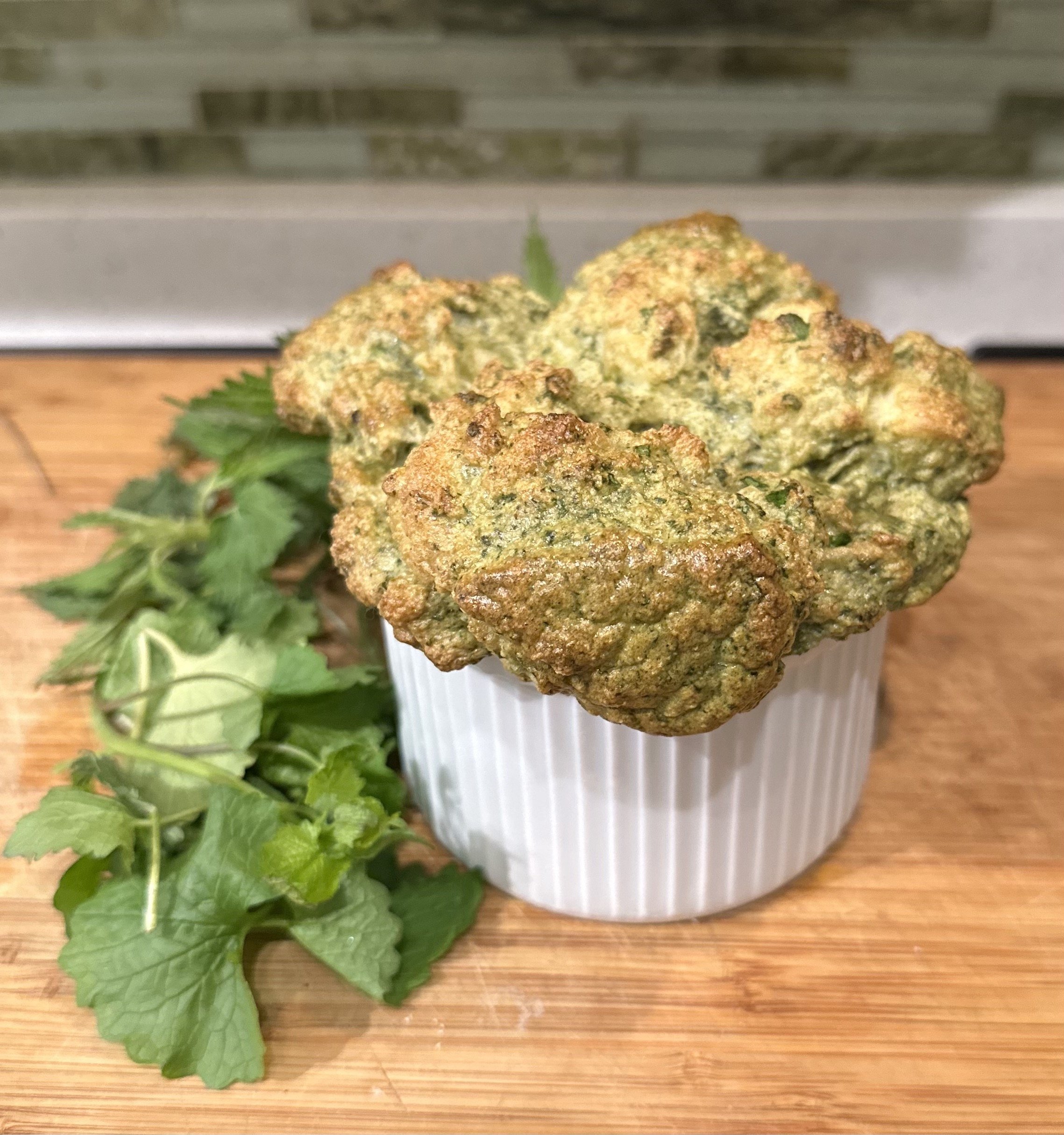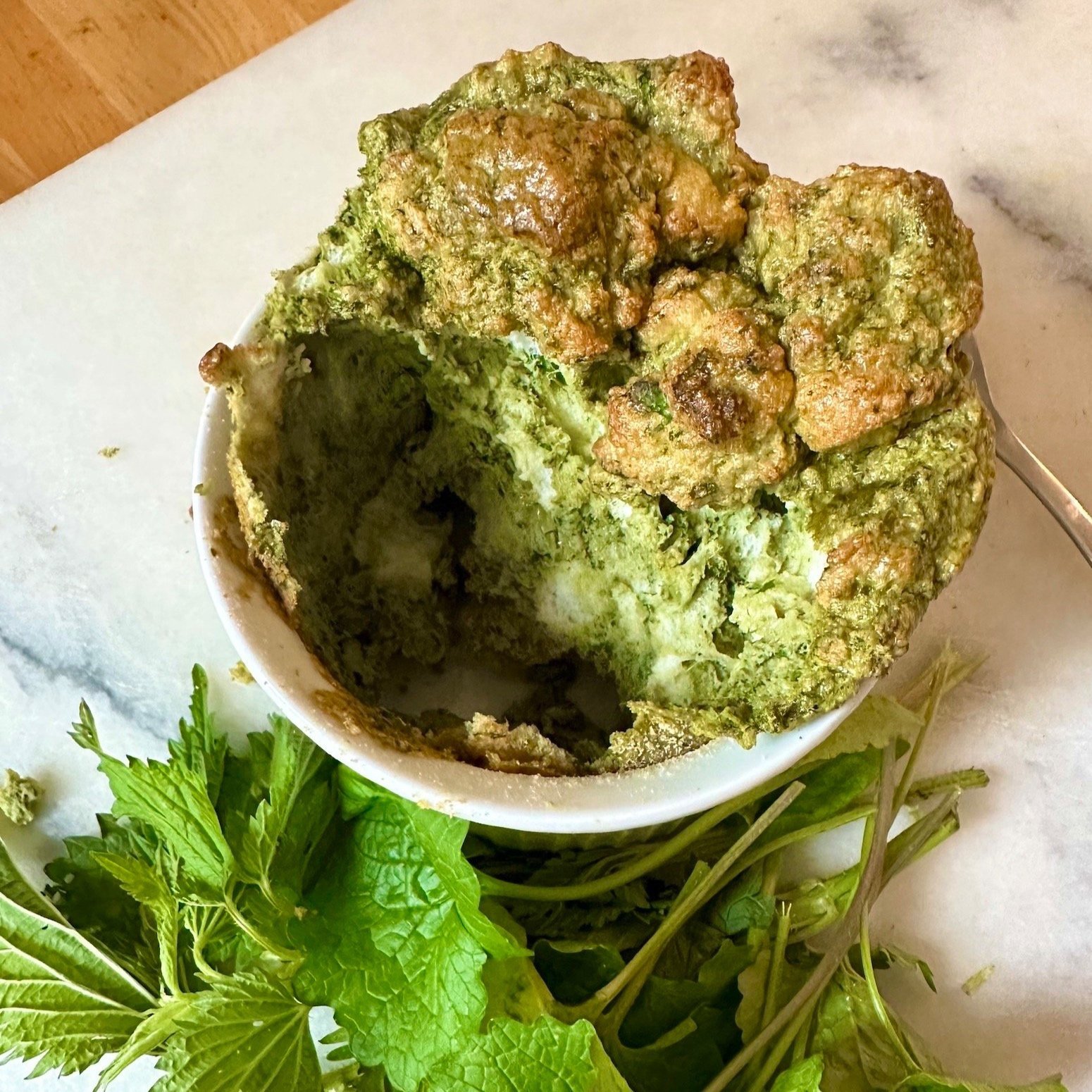Garlic Mustard & Stinging Nettle Soufflé
Have you ever made a soufflé for one? Or, perhaps I should ask, have you ever made a soufflé? It's so much easier then you could imagine, and this one is of course, a little on the wild side. Plus it's gluten and dairy free. I use two easy to find edible weeds in the soufflé, but as always if you are feeling wary of picking your own weeds, you can opt for a more conventional veggie choice, like grated zuchinni!
Garlic mustard is an invasive, so you can feel good about harvesting it, (providing you are gathering in an unsprayed, non-urban environment). It grows in a rosette, (like a lettuce) close to the ground. The first year leaves are kidney shaped with a little frill...These are the best ones to gather. The second year plant grows a stem and has little white flowers and the leaves are more pointed...You can certainly eat the second year leaves, but they will be more bitter in flavor, so I'd skip them. Rub the leaves and you'll get a strong whiff of garlic which makes the plant extra easy to identify.
Garlic mustard has high amounts of Vitamin A and C as well as trace minerals. The leaves are delicious when steamed, or you can use them in a pesto, as I did in this gluten free pizza recipe from 2018.
Stinging nettles feature in many of my recipes, and are rich in iron, protein, B vitamins, minerals and fatty acids. This herb helps to oxygenate the blood, lower histamine levels, support the nervous system and is a kitchen staple for most herbalists. If the color green had a flavor, the taste would surely be nettles!
The leaves are harvested twice a year, in the spring before the plant flowers and once again after the nettles have gone to seed and the leaves can be cut back for their second growth in the fall. The harvest is paused when the plant starts flowering to avoid cystoliths, (compounds the plant produces that can interfere with kidney function).
Tip: Always remember to wear gloves when handling nettles to avoid nettle stings.
Both garlic mustard and stinging nettles are considered gateway wild foods, in other words, they are easy for non-foragers to eat and love, because they are delicious....I find it easy to purchase both of these wild greens in farmers markets this time of year, so whether you forage, or buy them, I encourage you to seek them out.
Here's another nettle recipe for a soup if you are feeling inspired.
To make this for yourself...yes, just you...You'll need the following....
2 egg whites
1 egg yolk
2 1/2 teaspoons olive oil
1/2 teaspoon kudzu powder*
2 tablespoons of homemade nut or oat milk
1 teaspoon nutritional yeast**
10g fresh garlic mustard leaves***
10g fresh nettle leaves***
Fresh grated nutmeg
Salt & pepper to taste
Soufflé dish
A small amount of gluten free flour to coat the soufflé dish
A smear of olive oil to coat the soufflé dish
Ingredient key:
*Kudzu root is often found in Japanese stores, and I use it in place of flour as a thickener and in sauces that call for a roux sauce. It's a medicinal root used for soothing arthritic joints, neck tension, lowering blood sugar, reducing alcohol cravings and supporting cardiovascular health...
** Nutritional yeast is a vegan umami tasting condiment which has a cheesy flavor. It's used as vegan cheese substitute. It has a healthy dose of vitamin B12 and plenty of other nutritional benefits.
***If you aren't finding garlic mustard and/or stinging nettles in your local farmers market, then substitute with some grated zuchinni. The zuchinni will have a lot of extra moisture, so to avoid an overly wet mixture, splinkle the grated zuchinni with salt and set aside for 5-10 minutes. Rinse off the salt and pat the grated zuchinni dry before using in place of the other two wild greens.
Method
Preheat the oven to 350°F. Coat the inside of your soufflé dish with oil and a gluten free flour of your choice…I used cassava.
Gently heat the olive oil and stir in the kudzu powder in a stainless steel pan. Once mixed into a paste, whisk in the milk over a low heat to make this hybrid version of a roux sauce. Remove the sauce from the heat once it starts to thicken, and set it aside.
Rinse the stinging nettles well, and remove the nettle leaves from the stems. Dry the leaves and add them to a blender. Do the same with the garlic mustard, but keep and use the stems, as they are tender. Use a designated coffee grinder or blender to pulverize the leaves. Add this chopped mix to the roux and stir well. Stir in the egg yoke and nutritional yeast, and set this aside until after you have whisked the egg whites into white fluffy peaks!
Mix a small amount of the egg whites into the wild greens and egg yolk mix, and then fold the remaining egg whites in carefully. Do your best to keep the aerated lightness in the egg whites as you fold. Once it’s amalgamated, carefully spoon the finished mixture into the oil and flour lined soufflé dish. You’ll likely have a small amount of mixture over. It just won’t fit elegantly into the individual soufflé dish, so rather than overfill the dish, hold the excess mixture and cook quickly in a pre-oiled cast iron skillet to create a soufflé omlette. You can enjoy this soufflé taster while the real one cooks in the oven.
Place the soufflé dish on a baking sheet and put it into the hot oven. The soufflé will take about 25 minutes to cook. Resist the urge to open the oven to see how it’s doing, as it will deflate. If you have an oven light, you can check on your creation through the oven door, and once the top is risen and it’s golden brown, you can remove the soufflé, grab a spoon and enjoy!

